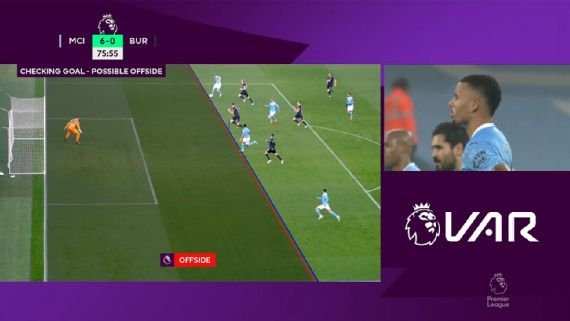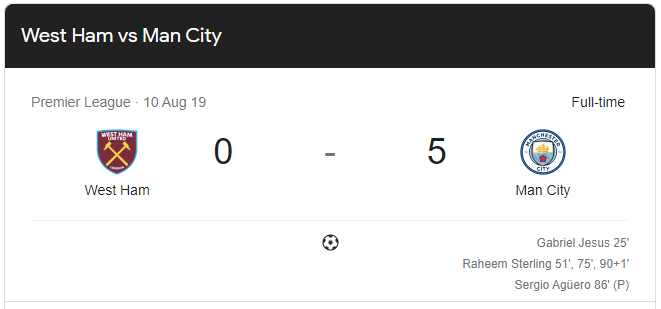VAR has been one of the most talked about points in football over the last few years. People tend to have some pretty strong opinions on the impact it has been having on football.
When was VAR first used in the Premier League? VAR was introduced to the Premier League for the 2019/20 season. This was after Premier League clubs voted to install VAR in the next season in November of 2018.

VAR has been constantly talked about in the Premier League. It may make it seem like VAR has been around for a lot longer than it has actually been around. Var had begun being trialled in football back in 2016, usually done in smaller leagues before it was introduced to bigger leagues like the Premier League.
By early 2018, the International Football Association Board gave VAR the green light to be used in football. Eight months later, Premier League clubs unanimously voted to introduce VAR to the Premier League, beginning with the 2019/20 season. It meant that Liverpool’s game against Norwich to open the season was the first Premier League game to use VAR.
VAR was not massively used in that game but it was still the first time that VAR was introduced to the Premier League, with the introduction being a success as the Premier League has continued to use VAR since. All 380 Premier League games in a season use VAR.
Why was VAR introduced to the Premier League?
VAR has been a very controversial addition to the Premier League, but there are some good reasons behind why It was introduced to the league.
1. Eliminate Referee mistakes
The primary job of VAR is to eliminate mistakes made by referees. Premier League referees are human and they make mistakes like any other person. The issue is that these mistakes can cost teams millions if it determines getting through in a knockout competition or if a bad decision affects the teams league standing.
Referees only see everything once and are asked to make a decision in a very quick time. This has led to some infamous referee mistakes. The Premier League needed a way to cut this out. VAR gives referees another chance to look at an incident that the VAR thinks should have been refereed differently.
When a referee looks at multiple replays, they are much more likely to make an accurate decision when they only get to look at something once. This is not always the case as some referees often do not want to admit they are wrong, with a lot of referees sticking with their initial decision, particularly when VAR was initially introduced.
But giving referees another chance at making a decision reduces the number of mistakes that a referee makes, part of the reason why VAR was unanimously voted into the Premier League.
2. Help control the things referees don’t see
It is incredibly difficult for a referee and his two assistants to constantly keep an eye on what 22 players on the pitch are doing. It is pretty much impossible to catch everything and it means that in the past referees have missed things. It is not the referee’s fault as there is only so much they can control.
The last couple of decades of technological advancements have made this a more frustrating point for fans, as often something that is missed by the officials during play will be displayed on the replays as one of the tens of cameras in the stadium will pick it up instead.
By introducing VAR, referees get the benefit of these replays. The VAR official has the benefit of watching all of these replays. If there is something that the referee has missed, the VAR official can direct the referee to the screen to see what it is that they missed, with the referee allowed to make a decision using the replays.
3. Eliminate the impact of the referee
Consistency is really what all Premier League teams are looking for in refereeing. They want referees to be consistent and in the past, the referee you have had has often had an impact on the result of the game.
By giving the referee another chance to look at decisions, the impact that they have is lessened because the result is more likely to be accurate. This makes the games much fairer and should in the future mean that referees are not the main talking point after games.
What was the first VAR decision in the Premier League?
On the 10th of August 2019 Premier League history was made as Manchester City crushed hosts West Ham 5-0. However it wasn’t the goals that counted making history. On 53mins City striker Raheem Sterling fired the ball into the goal. This was the moment when the first goal to be overturned by a Premier League Video Assistant Referee (VAR) took place.

Referee Mike Dean had awarded a 53rd-minute goal after Raheem Sterling had run on to David Silva’s flick before putting the ball in the net, which would have made it 3-0 to the visitors.
However David Coote, the VAR in Stockley Park, deemed Sterling to be offside when he received the ball. The margin of offside was tight, the new tech showed that a part of Sterling’s body, that he could play the ball with legally, was offside when the ball was played to him. The goal was overturned by Mike Dean and a free-kick was awarded to West Ham where the infringement took place.
History was made. Sterling, who had scored a legal goal 2 mins earlier, went on to claim a Hat-trick.
When was VAR introduced to the Champions League?
VAR was first used in the Champions League in February of 2019, being used in the knockout stages of the 2018-19 season. In early 2018, the IFAB gave the go-ahead for VAR to be used in football and so in the coming months, different competitions began to announce their usage of VAR in the next tournament.
In September of 2018, the Champions League became one of the competitions. UEFA announced that VAR would be used in the 2019-20 season. Despite this announcement coming out around the same time as the 2018-19 season started, VAR was not used in the group stages of the 2018-19 Champions League season.
However, it was first used in the competition in the group stages of the 2018-19 season. The very first game that the technology was used in was the Round of 16 clash between Manchester United and Paris Saint-Germain. The technology was not used in this game and the first time that it was in the clash between Ajax and Real Madrid.
Ajax had just scored a goal from a corner, but VAR intervened. Eventually, the referee disallowed the goal as Ajax player Dusan Tadic was interfering with Real Madrid goalkeeper Thibaut Courtois while in an offside position.
It was the first time that we saw the lines for offside drawn in the Champions League and as the goal had originally been given, it was an accurate use of the technology. Since then, VAR has been somewhat successful in the Champions League, still being used in the competition today.
